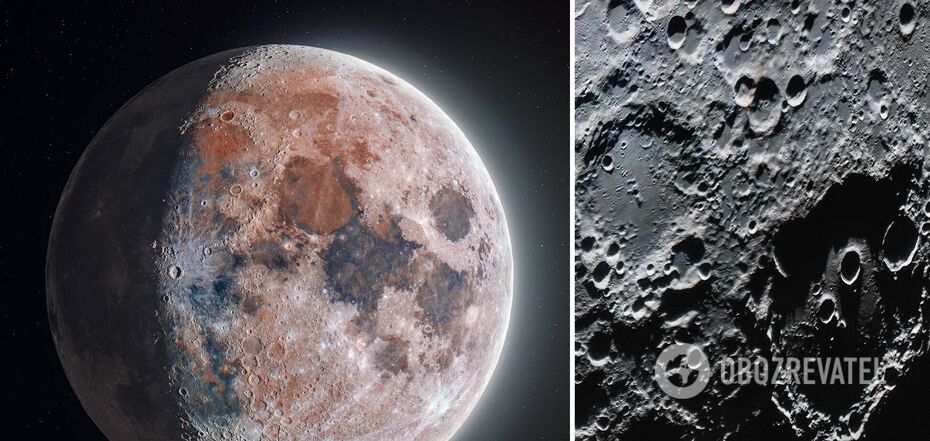Life
Color photo of the moon of 180,000 fragments stunned the net: it was never completely gray
Although from Earth the Moon looks like a gray and relatively uninteresting rock, it is in fact rich in color and much more interesting. But to do so, you have to look at it much more closely than the human eye allows.
American amateur astrophotographer Andrew McCarthy has published his own photo of the moon, which was compiled from 180,000 pictures taken over 45 minutes. He invited his followers to view details of the Earth's satellite, but many were puzzled not so much by the quality of the photo as by the fact that the surface of the moon was not completely gray.
"I took a photo of the moon at an obscenely high resolution. Zoom in and look at the details," McCarthy wrote when he published the photo.
The photo was compiled from 60 separate panels, each containing 3,000 16-bit photos. The total volume of files that were used to create the photo reached 600 GB.
In the photo, part of the moon is in shadow, while the other part is illuminated by sunlight reflecting off the Earth.
A more detailed photo can be viewed at this link.
"It's incredible, are these colors real? I see blue and brown, not just white," one of the many subscribers wrote.
McCarthy explained that the colors are indeed real, but the photo has increased their saturation to make them more visible.
"Wow. All my life I thought the moon was completely gray," another Twitter user responded.
The astrophotographer also explained that the large number of images used to compile one photo removes image distortion due to the Earth's atmosphere and also allows for clearer detail in the image.
He said that the compilation of photos took several days: it took about 3-4 hours for manual screening of bad quality photos, about 8 hours - for software (automated) combining them, and about 4 hours for manual alignment of the images and adjustment of details and differences in contrast between the parts of photos.
There was also the traditional question of whether it is possible to see in the photo the place where the American astronauts landed on the moon, in particular, the U.S. flag left on the satellite.
"The smallest craters I can distinguish are still miles wide. So no," McCarthy explained.
What colors are actually on the Moon
On Earth's satellite, gray and black colors predominate, but you can also find blue, orange, and even green. This is due to the geology of the satellite. Orange can be seen where there are deposits of iron in the soil, blue where there is titanium.
The white or gray color is responsible for the regions that are poor in iron. Calcium is mainly found there.
Dark colors are formed where there are basalts - volcanic rocks, which naturally have a very dark color. Basalts are also quite common on Earth, where they were formed by the rapid cooling of volcanic lava rich in magnesium and iron.
The same basalt rocks are also responsible for the green color of the Moon. This happens if they contain the mineral olivine, which is a green crystal. Olivine forms deep below the surface, but eventually bursts upward, giving basalt a greenish hue.
Previously, OBOZREVATEL also showed an "alien" photo of Earth taken by a NASA astronaut from the ISS.
Subscribe to OBOZREVATEL channels in Telegram and Viber to keep up with the latest developments.





























